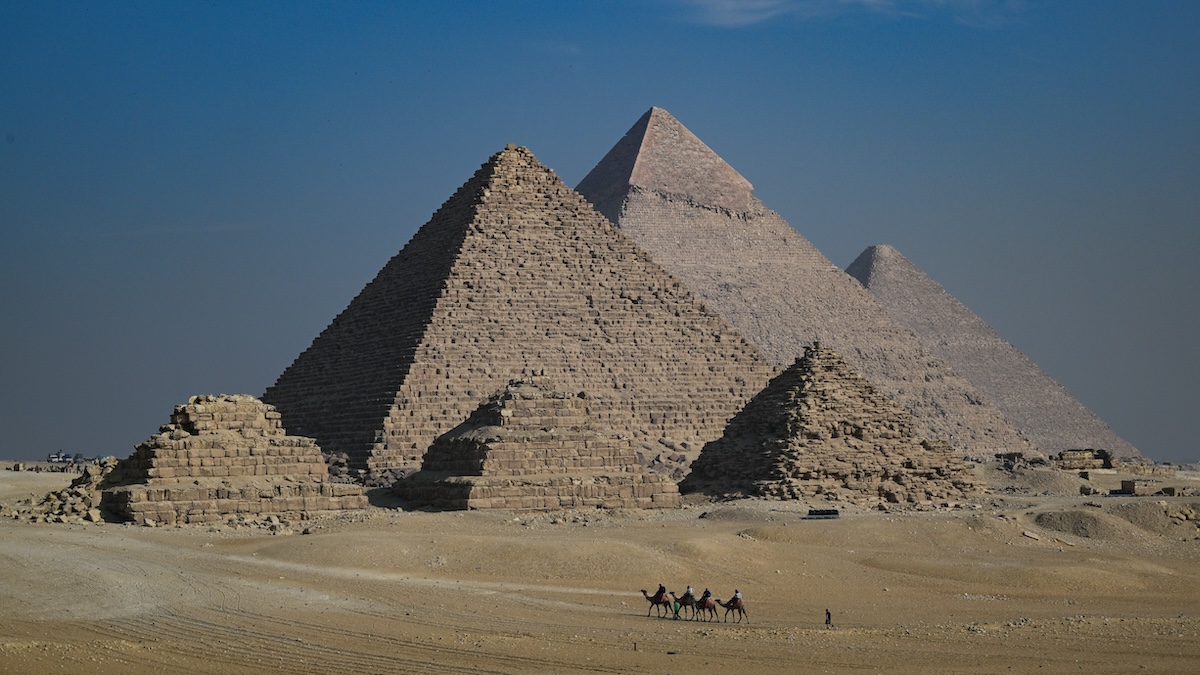Penn Museum and Egyptian archaeologists, alongside the Egyptian Ministry of Tourism and Antiquities, have discovered a massive tomb of an unnamed pharaoh at the ancient necropolis of Anubis Mountain in Abydos. Officials said the 3,600-year-old limestone burial chamber was found nearly 23 feet underground at the beginning of this year.
A lesser-known period in Egyptian history has just been unearthed.
Penn Museum and Egyptian archaeologists, alongside the Egyptian Ministry of Tourism and Antiquities, have discovered a massive tomb of an unnamed pharaoh at the ancient necropolis of Anubis Mountain in Abydos.
Officials said the 3,600-year-old limestone burial chamber was found nearly 23 feet underground at the beginning of this year.
The tomb featured a decorated entryway and a series of other rooms capped by 16-foot-high mudbrick vaults.
Get top local stories in Southern California delivered to you every morning. Sign up for NBC LA's News Headlines newsletter.
"One of Upper Egypt’s most ancient cities, Abydos is located about six miles from the Nile River. Believed to be the burial place of Osiris, god of the netherworld, as well as a gateway to the afterlife, the sacred city also served as a royal necropolis—the preferred resting place of the first pharaohs, holding great significance for early Ancient Egyptian power structures and political development," Penn Museum shared in a news release.
Officials said that even though the king who was once buried in this newly discovered tomb has not been identified, archaeologists believe he reigned during the Second Intermediate Period (1640-1540 BCE) during a "time of economic and political instability that yielded important social and technological changes when Egypt was broken into rival, warring kingdoms. One of these was the Abydos Dynasty, a series of kings who ruled part of Upper Egypt."
Penn Museum archaeologists have concluded that the unknown ruler may have been one of King Seneb-Kay’s --another Abydos Dynasty ruler -- predecessors. The newly unearthed tomb is much larger than Seneb-Kay or any other known ruler from the same dynasty buried there, officials said.
“The king’s name was originally recorded in painted scenes on plastered brickwork that decorated the entrance to the limestone burial chamber,” Penn Museum Curator of the Egyptian Section and University of Pennsylvania professor of Egyptian Archaeology Dr. Josef Wegner shared. “However, ancient tomb robbers damaged the hieroglyphic texts, and not enough survives to read the king’s name. There are several possible owners for the new tomb, including two kings named Senaiib and Paentjeni who dedicated monuments at Abydos but whose tombs remain unknown.”
Officials said excavations will continue using state-of-the-art technology such as remote sensing, magnetometry, and photogrammetry through 2025 and focus on the area of Anubis Mountain.
“Ongoing excavations also include protection, site management, and conservation of these structures. That is a part of our commitment to the site in cooperation with the Egyptian Ministry of Tourism and Antiquities,” Wegner says. “Together, we have now opened King Seneb-Kay’s and King Senwosret III’s tombs as visitable monuments, and we’re in the process of opening other ones in the very same area where this new tomb was found. This discovery is a new window to understanding the origins of the enigmatic Abydos Dynasty.”



